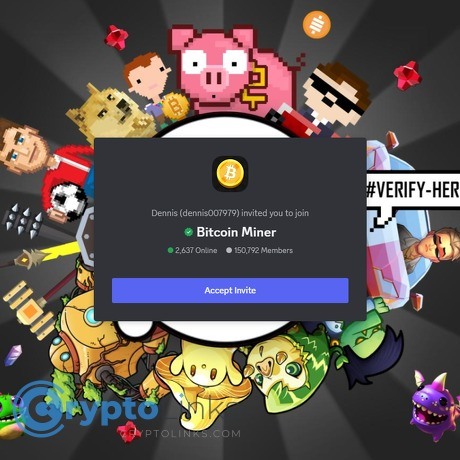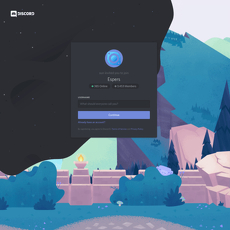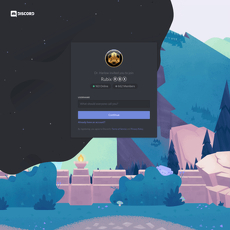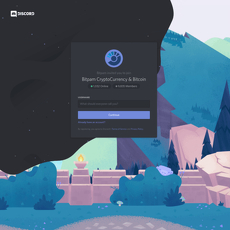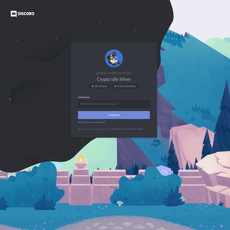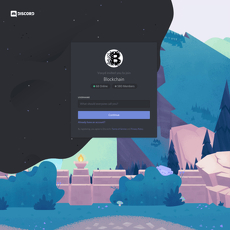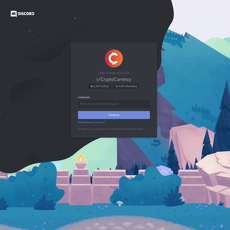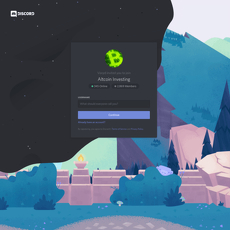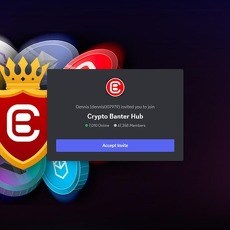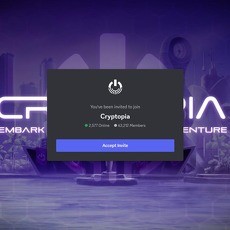Bitcoin Miner Review
Bitcoin Miner
discordapp.com
Bitcoin Miner Discord review guide: everything you need to know + FAQ
Thinking about joining a “Bitcoin miner” Discord to earn BTC, learn the basics, or just meet people who actually help? Wondering if it’s legit, how payouts supposedly work, and how to avoid getting burned?
If that sounds familiar, you’re in the right place. I’ve seen the best and worst of crypto Discords—clear education, great mods, and real help… mixed with fake giveaways, pressure DMs, and straight-up scams. My goal here is simple: help you save time, skip traps, and get value fast if you choose to join this Bitcoin Miner Discord.
The problems most people face before joining
Before you click “Accept Invite,” there are a few common roadblocks:
- What is this server, really? Is it an education hub, a hobby mining chat, a marketing funnel, or a “cloud mining” pitch?
- Too-good-to-be-true claims. You’ll see promises about profitable hash rates, easy payouts, and “guaranteed ROI.” That’s not how mining works.
- Safety worries. Fake airdrops, bogus “support” DMs, and malware-laced files are still a thing. The FTC keeps reporting billions lost to crypto scams across platforms—Discord isn’t magically immune. See the FTC’s warnings.
- Mining economics are confusing. Hardware costs, power prices, pools, fees, uptime, and difficulty can flip your profit math quick.
“Guaranteed daily payouts” and “limited-time ROI” are marketing phrases I flag instantly. Real mining has variable returns and real costs.
Promise solution
Here’s how I’ll make this painless and practical:
- Show you what this server looks like in practice. No fluff—just what you actually get once you join.
- Clarify how “earning” is framed. Education, giveaways, affiliates, “cloud mining,” or just a community? I’ll call it as I see it.
- Walk you through my safety checks. The exact signals I use to spot red flags fast.
- Set realistic expectations. What’s possible for a newcomer or hobbyist, and what usually isn’t.
- Give you a simple setup path. So you can find real value without wading through noise.
What this review covers
- What the server is—and isn’t
- How they say you can earn (if they do at all)
- Safety and scam checks you can use anywhere
- Who this community is best for
- How to get started fast without wasting time
- Honest FAQ with straight answers
If you’ve ever joined a Discord and immediately got pinged by a “support rep” asking you to “verify” via a shady link, you already know why this matters. Chainalysis shows scams shift tactics every cycle, but the theme doesn’t change: promise quick returns and hijack trust. Their latest crime trends (summary here) echo what many users experience on social platforms: confidence tricks thrive where DMs are open and moderation is weak.
How I approach these Discord reviews
When I check any “Bitcoin miner” server, I’m looking for signal, not hype. My checklist:
- Transparent moderation: Visible admins and mods, clear rules, and fast responses to reports.
- Strong safety posture: No-DM policies, anti-scam reminders, and warnings about unofficial links and files.
- Proof over promises: If there are payout claims, I want to see on-chain proofs, clear terms, and realistic timelines—no “guaranteed” language.
- Quality content for beginners: Pinned primers, mining basics, hardware and pool guides, and real troubleshooting—not recycled clickbait.
- No pressure funnels: No forced deposits, no off-Discord “investments,” and no time-limited ROI pitches.
A healthy server makes it easy to learn and hard to get scammed. If the reverse is true—leave.
Real example scenarios I watch for:
- Shady DMs after you join: A “mod” messages you first. Good servers warn that real staff won’t DM you unsolicited.
- Executable files in random threads: A stranger shares a “miner” zip. That’s a classic path to cryptojacking. Stick to official links and verified repos.
- ROI screenshots without context: Hashrate and revenue pics with no pool, no timestamps, and no power cost? Just storytelling.
If you’ve been wondering whether this Bitcoin Miner Discord is about real learning or just a funnel, let’s clear that up next. Want a straight answer on what it is, who runs it, and the features you’ll actually see when you join?
What is the Bitcoin Miner Discord?
If you’re eyeing this server, you’re probably asking: is it a straight-up mining education hub, a friendly place to swap hardware tips, or a funnel pushing “earn BTC” shortcuts? Here’s how I frame it the moment I step inside any “Bitcoin Miner” Discord and what you can realistically expect from a server like this.
“In crypto, the fastest way to lose money is to chase easy money. Slow is smooth, and smooth protects your stack.”
Purpose and audience
Most “Bitcoin Miner” communities land in one of two buckets: education-first or earnings-first. The healthier ones lean hard into education and practical support, while keeping any giveaways or promos clearly optional. That’s the vibe you want.
- What it aims to be: A place to learn Bitcoin mining basics, troubleshoot real setups, and compare experiences on pools, firmware, and power strategies. If there are “earn BTC” elements, the best servers frame them as side perks, not the main event.
- Who it’s best for: Beginners who want a simple path to understanding ASICs, pools, and profitability math; hobby miners tinkering with small rigs; crypto-curious folks who prefer asking humans instead of bouncing between scattered blog posts.
- Real sample conversations you’ll likely see:
- “My S19 is thermal throttling after 6 hours—any airflow fixes that actually work?”
- “Is Braiins OS worth it at $0.12/kWh after the last difficulty jump?”
- “Best way to wire a 240V circuit in a garage without tripping breakers?”
- “Which pool pays more consistently this quarter if I’m small-scale?”
Quick context that shapes all of this: independent research like Cambridge’s Bitcoin Electricity Consumption Index has shown how competitive mining is, especially after halvings. That’s why good servers lean into education and risk control instead of flashy ROI promises.
Who runs it and how it’s moderated
Strong leadership and clear rules make or break a mining Discord. When I evaluate one, I scan for a few must-haves in under five minutes.
- Visible team: Owners and mods with distinct roles and consistent presence. Look for “Owner,” “Admin,” and “Mod” tags and a clear who-to-DM for reports.
- Transparent rules: A pinned “no unsolicited DMs” rule, anti-scam reminders, and a zero-tolerance policy for forced deposits or sketchy files.
- Response workflow: Ticket systems (e.g., “open a ticket” channel) or a dedicated help desk that replies within hours, not days.
- Safety cadence: Regular reminders about impostors, fake giveaways, and how to verify admin identities. Bonus points if mods proactively warn about DM scammers after new members join.
If you report something, notice how fast they respond. Good servers acknowledge within minutes or at least the same day. Silence on scam reports is a red flag.
Key channels and features you’ll likely see
The layout of a quality mining server is usually predictable (and that’s a good thing). It means the team knows how to help you find answers fast.
- Start here: #welcome, #rules, #verify. Pinned messages should explain roles and how to protect yourself.
- Education and help:
- #mining-basics or #getting-started for new miners
- #asic-help and #firmware for hardware-specific advice
- #pools and #profitability for pool comparisons and calculator tips
- #setup-pics or #rig-builds for airflow, noise, and heat reuse ideas
- Market and ops:
- #electricity and #infra for power rates, 120/240V wiring, PDUs
- #marketplace for buying/selling gear (watch for escrow rules and feedback scores)
- Announcements and alerts: #announcements, #status, and price or difficulty bots. Expect simple price tickers, difficulty change alerts, and pool updates.
- Giveaways or “earn” channels: If present, they should be optional and clearly explained with terms, eligibility, and proof of past winners. If you see “cloud mining” mentions, there should be strong disclaimers and no pressure.
Common automation you might spot in mining servers: moderation bots for spam control, ticket bots for support, price-feed bots, and occasionally pool or on-chain alert bots. These are helpful—but they should never be used to push you into off-Discord deposits.
Quick green flags and red flags
Two minutes of scanning will tell you most of what you need to know.
- Green flags:
- Clear disclaimers: “Admins will never DM you first.”
- Active mods who warn about scams and remove sketchy links fast.
- Honest talk about electricity costs, uptime, and fees (not just price hype).
- Pinned guides, past Q&A threads, and respectful feedback on newbie questions.
- Any “earn” or “giveaway” content shows past on-chain proofs or public winner lists.
- Red flags:
- Guaranteed daily ROI or “limited-time mining contracts.”
- Pressure to deposit to a bot or DM-only wallet address.
- Files from random users (firmware, miners) without checksums or official links.
- Mods shrugging off scam reports or telling you to “just trust the process.”
- “Cloud mining” presented as risk-free or with payout timelines that sound like fantasy.
I want a server that respects your time and your security. That means helpful pinned posts, sensible channel structure, and no theatrics. If it feels like a casino lobby, it probably is.
Now the real question—if you see “earn,” “payout,” or “mining game” channels inside, what does that actually mean for your BTC balance? And how do you separate real mining economics from marketing? Let’s unpack that next.
Is it legit—and does it actually pay?
How real Bitcoin mining pays (quick 101)
Bitcoin mining rewards come from two sources: the block subsidy and transaction fees. Since the 2024 halving, the subsidy sits at 3.125 BTC per block, with fees fluctuating based on network demand. Blocks average every ~10 minutes, but that doesn’t mean easy money. Mining is a global competition against massive industrial farms.
Most individuals don’t mine solo—they join pools to smooth out earnings. Pools use payout schemes such as PPS (Pay Per Share), FPPS (Full Pay Per Share), or PPLNS (Pay Per Last N Shares). Your slice depends on your contributed hashrate and the pool’s math. Profitability hinges on:
- Hardware efficiency: joules per terahash (J/TH). Lower is better. ASICs dominate Bitcoin; GPUs are not competitive here.
- Electricity price: your kWh rate often decides if you’re profitable or not.
- Uptime and cooling: downtime kills returns; poor cooling throttles hashrate and shortens lifespan.
- Pool fees and payout threshold: small but real friction.
If you want to sanity-check the economics, use public tools like Cambridge’s CBECI for macro context and a miner ROI calculator (e.g., WhatToMine or ASICMinerValue) for device-level math. Remember, results swing with BTC price and network difficulty. That’s the real engine, not Discord hype.
“Trust math, not marketing. If it isn’t on-chain, it’s not proof.”
If the server promises earnings, what model is it?
I’ve seen a handful of recurring setups around “mining” communities. If you notice earning claims in the Bitcoin Miner Discord, they usually fit one of these buckets:
- Education-only: No payouts, just mentoring, guides, and troubleshooting. Safest for beginners. The “value” is knowledge, not coins.
- Affiliate deals: Discounts or kickbacks for hardware, pools, or hosting. Can be fine if transparent. Look for disclosures.
- Giveaways/airdrops: Small, irregular rewards. Require clear rules, on-chain proof of winners, and no forced deposits.
- “Cloud mining” contracts: You pay upfront, they claim to mine for you. Historically high risk. If ROI is “guaranteed” or front‑loaded, that’s a major red flag.
- “Mining games” or tap-to-earn: Entertainment first. Any payouts are typically tiny and often gated by ads, tasks, or KYC hurdles.
In short: education and honest discounts are normal. Anything that blends deposits with guaranteed ROI deserves your most skeptical hat.
Proof you should look for before trusting payouts
I don’t accept screenshots or “mod says so.” Here’s the baseline proof I require before believing any earning claim:
- On-chain verifiability: Public payout addresses and TXIDs you can check on an explorer like mempool.space. Multiple consistent payouts over time, not a one-off.
- Clear terms: Payout schedule, minimum withdrawal, fees, lockups, and who controls custody. No vague answers.
- Community track record: Search the server for “TXID,” “payout,” or “bc1” and read threads going back months. Real users share addresses and timing details; bots and shills don’t handle follow-up questions well.
- No guarantees: Mining yields fluctuate. Any “daily fixed ROI,” “principal protected,” or “limited-time 30% monthly” is marketing, not mining.
- External corroboration: Do members post the same payout details on other platforms? Consistency matters.
One trick I use: ask for a fresh payout to a brand-new address you control and verify the TXID. If they stall, pivot, or push deposits first, that tells you everything.
My take based on common patterns
After watching countless “mining” Discords, a few truths keep repeating:
- The real value is education and community support. If you walk away with a better hardware plan and a safer wallet setup, that’s a win—no matter what the market does this month.
- “Mining games” rarely move the needle. Treat them like arcade tokens. If it pays, cool. If it doesn’t, you still had some fun.
- Deposit-for-yield schemes demand extreme caution. Ask for on-chain proof, clear terms, and history. If returns look smooth and magical while Bitcoin’s difficulty and price are choppy, the math probably doesn’t add up.
There’s an old line I keep taped to my monitor: “If it sounds too good to be true, it’s priced for someone else’s benefit.” In mining, the cheapest power and the best uptime win. Everything else is just a story. Ready to jump in without tripping over the noisy channels and DM traps? In the next part, I’ll show you exactly how to set up your joins, filters, and safety settings so you only see what actually helps—want that shortcut?
Getting started the smart way
Step-by-step to join and set up
Here’s the exact way I join any mining Discord without getting overwhelmed or tricked. It takes five minutes and saves hours later.
- Join: Click the invite https://discord.gg/5J4s9vgf.
- Verify: Complete the welcome/verify flow. If there’s a captcha or reaction role, do it in the #welcome or #verify channel so you see all rooms.
- Set a useful nickname: Add a hint that helps others help you (example: “Alex | $0.14/kWh | learning BTC”).
- Quiet the noise: Right‑click the server icon → Notification Settings → set to Only @mentions and Suppress @everyone/@here. Keep notifications on for #announcements, #rules, and any #help-desk channel.
- Skim the map: Open the channel list and collapse anything you won’t use today. You can always expand later.
Small setup, big payoff. You’ll get the signals without the sirens.
“Trust, but verify. In crypto spaces, that means: read the rules, check the pins, and never act on a DM.”
How to navigate channels efficiently
The fastest way to find gold in a mining server is to use the tools Discord already gives you.
- Start with the pins: Open #rules, #start-here, and any #resources channel and click Pinned Messages. Most servers pin hardware guides, pool how‑tos, and links to profitability calculators. This prevents asking the question that’s already answered.
- Search like a pro: Use the search bar with filters:
- in:#hardwarehas:link “S19j Pro”
- in:#pools “PPLNS vs PPS”
- in:#profitability “$0.12/kWh”
You’ll surface past answers from mods and experienced miners in seconds.
- Follow threads: When a thread matches your setup (e.g., “Home BTC mining at $0.15/kWh”), click Follow so updates land in your inbox.
- Ask better, get better: Post in the right channel with a tight template:
- Goal: Learn BTC mining, not chasing ROI
- Power cost: $0.14/kWh (U.S. Midwest)
- Budget: $1,500
- Noise/cooling: Apartment, no 240V yet
- Question: “S19j Pro 100T vs wait for a used M30S++? Which is safer for a first rig?”
Mods love specifics; you’ll get faster, sharper replies.
- Save what matters: Copy message links for great posts and drop them into your own “notes” DM (Saved Messages) so your best references are always one click away.
Pro tip: A good search beats a bad argument. I always search first, then ask.
Safety settings to enable
According to recent consumer protection data, social platforms are a top vector for investment scams—DMs are where many of them start. Set these once, and you’ll sidestep most traps.
- Disable server DMs: User Settings → Privacy & Safety → Server Privacy Defaults → toggle off “Allow direct messages from server members.”
- Enable content scanning: Privacy & Safety → Safe Direct Messaging → set to “Keep me safe.”
- Lock down friend requests: Only allow from Friends of Friends or Server Members you manually approve.
- Turn on 2FA: User Settings → My Account → Enable Two-Factor Auth. Use an authenticator app, not SMS.
- Verify every link: Only click links posted by visible admins or in official channels. Check the domain carefully (example: braiins.com vs a look‑alike). If unsure, paste the URL into a safe checker like VirusTotal first.
- Never download random files: Firmware, miners, and wallets should come from official sites. If someone sends a “tool” by DM, assume it’s malware.
Why so strict? Because scammers rely on urgency and privacy. You remove both with these settings.
How to get value in your first 48 hours
Here’s a simple plan I use to get real value quickly—no fluff, no rabbit holes.
- Post a short intro: In #introductions or #new-miners, share:
- Where you’re mining (home/garage/office)
- Power rate ($/kWh)
- Budget and noise limits
- Your end goal (learn, tinker, long‑term mining)
Sample: “Hey all! $0.13/kWh, $1.2k budget, quiet setup needed. I want to learn Bitcoin mining basics and avoid rookie mistakes. What’s a safe first ASIC to watch for on the used market?”
- Read the starter path: If there’s a #start-here or #learning-path, follow it before anything else. Expect links to Bitcoin basics, pool setup, and wallet safety.
- Run one profitability check: Use a reputable calculator and your real power cost. Two I like for BTC hardware:
- Braiins Profitability Calculator
- ASICMinerValue
Plug in hashrate, efficiency, pool fee (~2%), and your $/kWh. Screenshot the output and ask the server, “Am I missing any hidden costs?”
- Bookmark the good stuff: Copy links to the best pinned posts, pool guides, and safety notes into your Saved Messages. You’ll reference them often.
- Ask one targeted hardware question: Compare two realistic options at your budget with actual numbers. Example: “At $0.12/kWh, is an S19j Pro 100T at $700 smarter than a used M30S++ at $650 if both are on stock firmware?”
I keep it simple: introduce, read, simulate, ask, save. That’s how you build momentum without burning time.
One last reminder: scammers go for urgency, miners go for accuracy. The first 48 hours set your tone—calm, curious, and careful.
Ready for the part everyone secretly wants: the money talk. What does $0.12/kWh actually mean for break-even on a popular ASIC, and how fast can “earnings” vanish with fees and downtime? Let’s run the numbers next.
Realistic earning expectations (and costs)
I love the excitement of unboxing a new miner—the hum, the heat, the promise. But here’s the truth no one wants to hear: without cheap power and the right machine, that promise can turn into an expensive space heater fast.
“Hope is not a mining strategy. Spreadsheets are.”
Hardware mining: what actually matters
For Bitcoin, ASICs dominate. GPUs aren’t viable for BTC today—full stop. Your outcome hinges on a few brutal variables that don’t care how motivated you are:
- Hashrate and efficiency: A modern ASIC like an Antminer S21 (around 200 TH/s, ~17–20 J/TH) beats older units like an S19j Pro (~100–110 TH/s, ~27–30 J/TH) by a mile. Efficiency = lower watts per terahash = lower power bill for the same revenue.
- Electricity price: Your kWh rate is the boss. Even a top-tier ASIC loses money at high power costs.
- Cooling and uptime: Heat throttles performance. Dust kills fans. Every hour down is revenue gone.
- Pool fees: Typically 1–2%. It sounds small—across months, it isn’t.
- Difficulty and BTC price: Both swing your outcome. Halvings cut block rewards in half instantly; fee spikes help, but you can’t count on them.
Use calculators before you buy: I always model scenarios with multiple inputs and “worst case” toggles.
- Braiins Mining Profitability Calculator
- CryptoCompare BTC Mining Calculator
- Cambridge Bitcoin Electricity Consumption Index (context on energy)
Tip: Run your numbers at multiple electricity rates, multiple BTC prices, and with difficulty +10–25%. If the plan only works with perfect assumptions, it doesn’t work.
“Cloud mining” and “mining games”
Cloud mining is the industry’s forever siren song. Some are real; many are not. And plenty of “mining games” are entertainment with pocket-change rewards at best.
- Cloud mining risks: Opaque contracts, “maintenance fees” that climb, glossy dashboards with no on-chain proof, withdrawal minimums that are never quite met.
- What to demand: On-chain payout history to your wallet, verifiable pool stats, contract terms with fee schedules, and public reviews older than a month.
- Mining games: Fun? Sure. Income? Not really. Treat rewards like bonus sats, not a paycheck.
Consumer-protection and blockchain analytics reports have flagged “investment-style” schemes—often framed as cloud mining—as a recurring fraud vector for years. If it requires deposits and guarantees ROI, assume high risk until proven otherwise with on-chain evidence.
Electricity and fee impact
Let’s translate the buzzwords into a simple mental model you can trust:
- Daily revenue ≈ (Revenue per TH/s per day) × (Your TH/s)
- Daily power cost ≈ (J/TH × TH/s × 24 ÷ 1,000) × kWh price
- Net ≈ Revenue − Power − Pool fees − Hosting/maintenance
Two quick realities:
- The break-even kWh rate is the line between mining and subsidizing your power company.
- Small slippage compounds: 1.5% pool fee + 2% downtime + a few degrees of heat throttling + dust = your margins melt.
Simple scenarios to set expectations
Illustrative numbers only. Always run your own calculator with current data.
- Scenario A: Average power, older ASIC
S19j Pro ~104 TH/s at ~29 J/TH → ~3.0 kW draw.
Power $0.12/kWh → ~$8.64/day in electricity.
If revenue per TH/s/day is ~$0.045, gross ≈ $4.68/day.
Subtract 2% pool fee: ~$4.59. Net ≈ - $4.05/day before anything breaks.
Emotion check: It stings to watch sats arrive while your power bill rises faster. - Scenario B: Good power, efficient ASIC
S21 ~200 TH/s at ~17 J/TH → ~3.4 kW draw.
Power $0.06/kWh → ~$4.90/day in electricity.
Same $0.045/TH/s/day revenue → ~$9.00/day gross.
Pool fee 2%: ~$8.82. Net ≈ $3.92/day if uptime is solid.
ROI on a $3,000 machine at ~$4/day? ~750 days—before difficulty changes, parts, or downtime. - Scenario C: Hosted mining
Hosting at $0.08/kWh + 10% management fee on revenue.
Your electricity cost rises, and the fee clips the top. Great for convenience, brutal for margins unless your host is cheap and honest. - Scenario D: “I’ll just use home heat”
In cold months, offsetting heating costs can improve the math. But in summer, cooling can add cost and noise is real. Your family will notice.
Hidden costs most people forget:
- Import duties, shipping, and VAT on ASICs
- Electrical work: 240V circuits, PDUs, breakers, surge protection
- Networking: stable Ethernet, not flaky Wi‑Fi
- Spare fans, filters, and downtime during maintenance
One more mental shortcut I use: sats-per-dollar. Sometimes buying BTC outright gets you more sats than mining at a high kWh rate. If your calculator shows negative or razor-thin margins, that’s your signal.
Feel the gap between the hype and the spreadsheet yet? Good. Now, who actually benefits from joining a mining community like this—and who should simply stack sats or look for better alternatives? Let’s sort that next…
Best fits, alternatives, and how it compares
Who will likely love this Discord
If you want a practical place to ask mining questions without getting roasted or pushed into “investments,” this server is likely your speed. It’s geared toward curiosity, tinkering, and getting real answers fast.
- Beginners who want curated, beginner-safe answers. Expect patient explanations on wallets, power, pools, and basic setups. I’ve seen threads where members share step-by-step screenshots for joining a pool or wiring a 240V outlet safely—no condescension, just help.
- Hobby miners who enjoy troubleshooting and sharing builds. Photos of basement racks, firmware tuning notes, and fan/noise control hacks are common in healthy mining communities. If you like tweaking efficiency and comparing kWh math, you’ll feel at home.
- People who learn by doing. If you’re the type to try Braiins OS+/LuxOS, compare pool payout schemes, or run a few-day test against your power bill, you’ll get value from crowdsourced feedback loops.
- Anyone who values active moderation. Good mining spaces enforce no unsolicited DMs, nuke obvious “ROI in 24 hours” spam, and keep channels on-topic. That’s the difference between learning and wasting an evening swatting bots.
Who should probably skip
Some folks won’t like it—and that’s fine. Here’s who tends to bounce:
- People hunting “guaranteed” daily payouts. If you’re looking for a tap that spits BTC with no risk, this isn’t it. Mining is real work with real costs.
- Anyone unwilling to learn the basics. Pools, fees, firmware, electricity, heat—if that sounds like homework, you’ll get frustrated. Mining rewards patience.
- Users with high electricity costs who only want profits right now. If you pay steep residential rates, mining may not pencil out. You might be better served by a DCA strategy rather than running an ASIC at a loss.
- Folks who won’t read pinned messages. The fastest way to get help is to follow the channel rules and use search. If you ignore the basics, any mining server will feel noisy.
Alternatives and complements
You don’t have to pick just one community. Here’s how I pair a Discord like this with other reliable sources to cover all bases:
- Mining pool docs for “how it really works”:
- Braiins Pool (docs + payouts) — clear guides on payout schemes and setup.
- F2Pool Help Center — step-by-step connection tutorials and fee details.
- Luxor Hashrate Index Education — strong primers on mining economics and pool mechanics.
- Manufacturer guides for hardware-specific answers:
- Bitmain Support — firmware, repair, and S19/S21 tips straight from the source.
- MicroBT/WhatsMiner Service — official manuals, specs, and troubleshooting.
- Forums and Q&A when you need long-form context:
- r/BitcoinMining — broad community reach, useful search history for edge cases.
- Bitcointalk Mining Section — legacy threads, firmware discussions, and niche fixes.
- Bitcoin Stack Exchange — vetted Q&A on protocol-level questions that impact mining decisions.
- Data to sanity-check assumptions:
- Cambridge CBECI — context on network power draw and mining distribution.
- U.S. EIA electricity data — official power price statistics (great for realistic profitability math).
- Hashrate Index — ASIC price trends, efficiency charts, and miner economics research.
- If your electricity is expensive:
- Consider accumulating BTC instead of mining until conditions improve. Many hobbyists rotate between DCA and mining depending on their kWh rate and hardware availability.
Quick comparison: A focused Discord typically beats Reddit for fast, actionable help and beats Telegram for moderation quality. Forums like Bitcointalk win on archival depth, but they’re slower. Mix them and you’ll cover speed, quality, and history.
How I’ll update this review
I keep tabs on this server the same way I track other mining communities—by watching the signals that matter and ignoring the noise.
- Moderation health: How fast are scam posts removed? Are “no DM” rules enforced? Are new users guided to the right channels?
- Content quality: Are pinned resources updated? Are hardware/firmware answers current for the latest ASIC generations?
- Any shift toward payouts or “cloud” offers: If they introduce monetized programs, I’ll re-check proof-of-payment, on-chain references, clear terms, and whether returns are realistic with no guarantees.
- Community outcomes: Are members actually getting rigs stable, reducing J/TH, and choosing better pools? Real wins, not hype, are the tell.
I’m tracking all that, so you don’t have to. Now, want the blunt answers everyone secretly wants—like “Does a Bitcoin miner Discord actually pay you?” and “How long does it take to mine $1” without the fluff? Let’s tackle that next.
FAQ: quick, honest answers
Does Bitcoin miner actually pay you?
Short answer: Bitcoin mining pays miners who contribute real hashrate to the network, almost always through a pool. It’s competitive, hardware-heavy, and power-cost sensitive.
A Discord server doesn’t pay you by default. If a server runs giveaways or a “program,” you should expect public proof, clear rules, and no guarantees. Screenshots aren’t proof. Look for on-chain transactions or immediate Lightning payouts you can verify.
- What counts as real proof? A public wallet, TXIDs you can check on mempool.space, or verifiable Lightning payments (QR → paid in seconds).
- What’s usual in good communities? Education first: help with hardware choices, pool setup, and safety. Any “earn” angles are small, transparent, and optional.
Is the Bitcoin miner game legit?
Most “mining games” are entertainment. They simulate mining or reward tiny amounts of sats. They’re not a path to meaningful income.
- Harmless fun: Skill or ad-supported games paying small Lightning tips exist, but think hundreds to a few thousand sats here and there, not rent money.
- Red flags: Up-front deposits, “ROI” promises, daily guaranteed yields, or time-limited investment pitches. These patterns dominate scam reports in FTC consumer alerts. See: FTC guide on crypto scams.
How long does it take to mine $1 of Bitcoin?
There’s no fixed time. Your outcome depends on hashrate, network difficulty, BTC price, and especially your electricity rate. The network finds a block roughly every 10 minutes, but an individual miner earns only a tiny slice through a pool.
Here’s a simple example to sanity-check expectations, not a promise:
Example: 100 TH/s ASIC at ~3 kW. With the 2024 halving, the block subsidy is 3.125 BTC. If the total network is ~700 EH/s, your share is about 100 TH/s ÷ 700,000,000 TH/s ≈ 1.43e-7. Subsidy per day ≈ 144 blocks × 3.125 = 450 BTC. Your expected slice ≈ 450 × 1.43e-7 ≈ 0.000064 BTC/day (~6,400 sats/day) before fees and power. At $0.10/kWh, power is ~72 kWh/day ≈ $7.20/day. Depending on BTC price and pool luck/fees, you might be near breakeven or losing money. At $0.03/kWh, the same rig can be modestly profitable.
That tiny slice is why electricity price and efficiency dominate results. For a deeper macro view, bookmark Cambridge’s tracker: CBECI. For current estimates per machine, use a live calculator like minerstat ASIC pages.
Extra tips: safety, KYC, and withdrawals
- Never send funds to DMs: Real mods won’t pressure you in private. Disable DMs from server members to cut off impersonators.
- Proof before deposit: If anything requires a deposit, insist on verifiable, long-running proof of payouts and clear terms. No proof, no deposit.
- KYC: If a service requires identity verification, read the terms, weigh the jurisdiction and reputation, and ask the community about their withdrawal experience.
- Withdraw smart: For small rewards, Lightning payouts are fast and verifiable. For long-term storage, use a non-custodial on-chain wallet and back up your seed securely.
- Files and bots: Don’t run random executables or “optimizer” tools sent in chat. Stick to official links. Malware loves “mining” channels.
Final thoughts and next steps
Go in for the learning, stay for the community. If you’re joining https://discord.gg/5J4s9vgf, ask questions, verify claims, and keep expectations grounded. Mining can be rewarding—financially if your numbers work, and educationally either way.
- Set your filters: Education and support = green. Guaranteed daily payouts = red.
- Ask for proof: On-chain TXIDs or instant Lightning. Screenshots aren’t enough.
- Run your math: Hardware + electricity + pool fees + uptime. The spreadsheet rarely lies.
If you learn something useful, that compounds—hardware changes, difficulty changes, but good decision-making sticks around.
CryptoLinks.com does not endorse, promote, or associate with Discord servers that offer or imply unrealistic returns through potentially unethical practices. Our mission remains to guide the community toward safe, informed, and ethical participation in the cryptocurrency space. We urge our readers and the wider crypto community to remain vigilant, to conduct thorough research, and to always consider the broader implications of their investment choices.

